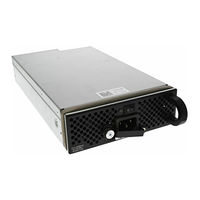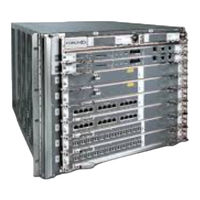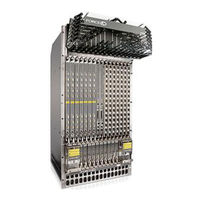Dell Force10 E300 Manuals
Manuals and User Guides for Dell Force10 E300. We have 3 Dell Force10 E300 manuals available for free PDF download: Configuration Manual, Installing And Maintaining, Quick Start Manual
Dell Force10 E300 Configuration Manual (1262 pages)
FTOS Configuration Guide FTOS 8.4.2.7 E-Series TeraScale, C-Series, S-Series (S50/S25)
Table of Contents
-
-
Objectives33
-
Audience33
-
Conventions34
-
-
-
-
5 802.1Ag
79-
Ethernet CFM79
-
-
6 802.3Ah
93-
-
Remote Loopback103
-
-
7 802.1X
109-
Enabling 802.1X112
-
-
Overview133
-
Cam Optimization136
-
Test Cam Usage136
-
-
Established Flag146
-
-
IP Prefix Lists153
-
ACL Resequencing157
-
Route Maps160
-
-
-
How BFD Works170
-
-
-
Route Reflectors209
-
Confederations210
-
BGP Attributes211
-
Weight214
-
Local Preference214
-
Origin215
-
Next Hop217
-
Debugging BGP267
-
Capturing Pdus269
-
PDU Counters271
-
-
CAM Profiles282
-
Microcode284
-
Boot Behavior286
-
CAM Allocation289
-
Test CAM Usage290
-
View CAM Usage292
-
CAM Optimization298
-
-
-
Archived Files301
-
-
-
-
Option 82322
-
DHCP Snooping322
-
-
-
Show Inventory356
-
FTSA Policies357
-
Debugging FTSA371
-
-
-
RPM Redundancy380
-
-
Hitless Behavior389
-
Graceful Restart390
-
Warm Upgrade393
-
-
-
Configuring IGMP408
-
Adjusting Timers410
-
IGMP Snooping412
-
Interfaces
415-
Interface Types416
-
Null Interfaces427
-
-
-
Interface Range440
-
-
Add Ranges442
-
-
Link Dampening448
-
Port-Pipes454
-
-
Ipv4 Addressing
463-
IP Addresses463
-
Icmp475
-
UDP Helper476
-
-
Ipv6 Addressing
483-
Ipv6 Headers485
-
Addressing488
-
Icmpv6492
-
Qos for Ipv6494
-
Ipv6 Multicast495
-
-
Telnet with Ipv6499
-
SNMP over Ipv6500
-
Show Ipv6 Routes502
-
-
IS-IS Addressing508
-
-
Layer
559-
-
NIC Teaming569
-
-
Configuring FEFD578
-
Debugging FEFD580
-
-
Optional Tlvs585
-
Management Tlvs585
-
-
Configuring LLDP591
-
Enabling LLDP592
-
Advertising Tlvs592
-
Debugging LLDP598
-
-
MLD Version 1605
-
MLD Version 2607
-
Enabling MLD608
-
Debug MLD611
-
-
Clear MLD Groups611
-
-
MLD Snooping611
-
Mldv2 Snooping613
-
-
-
Enable MSDP622
-
Debug MSDP632
-
-
-
Object Tracking
677 -
-
Area Types693
-
Router Types694
-
Virtual Links698
-
-
Enable Ospfv2705
-
Filter Routes720
-
-
-
PIM Dense-Mode
747 -
PIM Sparse-Mode
755-
Configure PIM-SM757
-
Enable PIM-SM758
-
Monitoring PIM766
-
PIM-SM Snooping767
-
-
Deploying VOIP795
Advertisement
Advertisement
Advertisement


